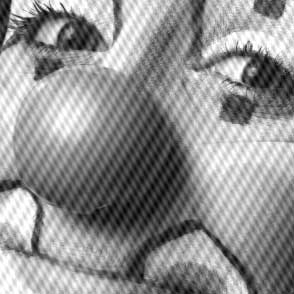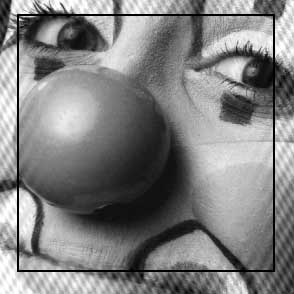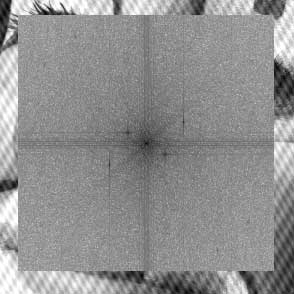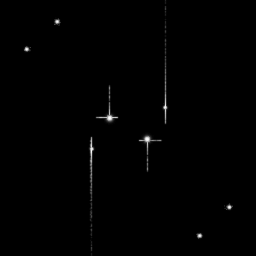Fast Fourier Transform (FFT)
Removal of periodic noise
This example shows how periodic patterns in images can be reduced or removed using standard Fast Fourier Transform (FFT) masking. This is only one application of FFT processing but it's a very significant one. The software used was FoveaPro (together with Adobe Photoshop®) but many other programs are available which will do the same thing. I personally like and recommend FoveaPro because it provides a complete set of scientific image processing functions within the Photoshop environment.
 The clown image shown at right is part of the FoveaPro package. The clown image shown at right is part of the FoveaPro package.
FFT processing is a great way to remove or reduce patterned noise from an image. The undesireable elements like this repetitive pattern can very often be removed without affecting the rest of the image content in any significant manner. Most other methods used to eliminate moire and other repetitive patterns use blurring either directly or by resampling. FFT filtering, when applied in the following manner, is not a blurring action. As a result, it is a very efficient and effective method for image restoration. This particular image is black-and-white (grey-scale) but colour images work just as well.
The actual processing sequence is shown below running in a counter-clockwise order from image 1 to 4. Note that the area of interest (AOI) processed is square and does not include the entire image. The square format is required by the FFT processing. To process the entire image, overlapping areas could be processed and combined to produce a single, corrected image.
This example really shows how well this type of processing works to improve an image. In many instances images can be restored almost perfectly. Quite often repetitive noise in an image will hide or obscure fine detail that is actually present in an image. After the image has been processed these fine details become readily apparent. For example, take a look at the clown's eyes and lips. Even the bridge of the nose shows detail that isn't very apparent in the original image — but it is there. This processing does not create any new information; it selectively removes portions of the image making other parts more visible.
Image 1: original image

|
Image 4: resulting image after FFT inversion
 |

|

|
Image 2: FFT applied - Power Spectrum

|
Image 3: mask applied to FFT

|

|
Rather a nice result, isn't it?
|
Please note that halftoned images are often copyright protected. This information is not being provided with the intent that people should use this method to 'steal' such images for their own use. If it's not your own image, get permission to use it.
Contents © 2002 R. Brent Ostrum, Renaissance Digital Imaging
Clown image from FoveaPro 1.0 package.
|
|
 The clown image shown at right is part of the FoveaPro package.
The clown image shown at right is part of the FoveaPro package.


